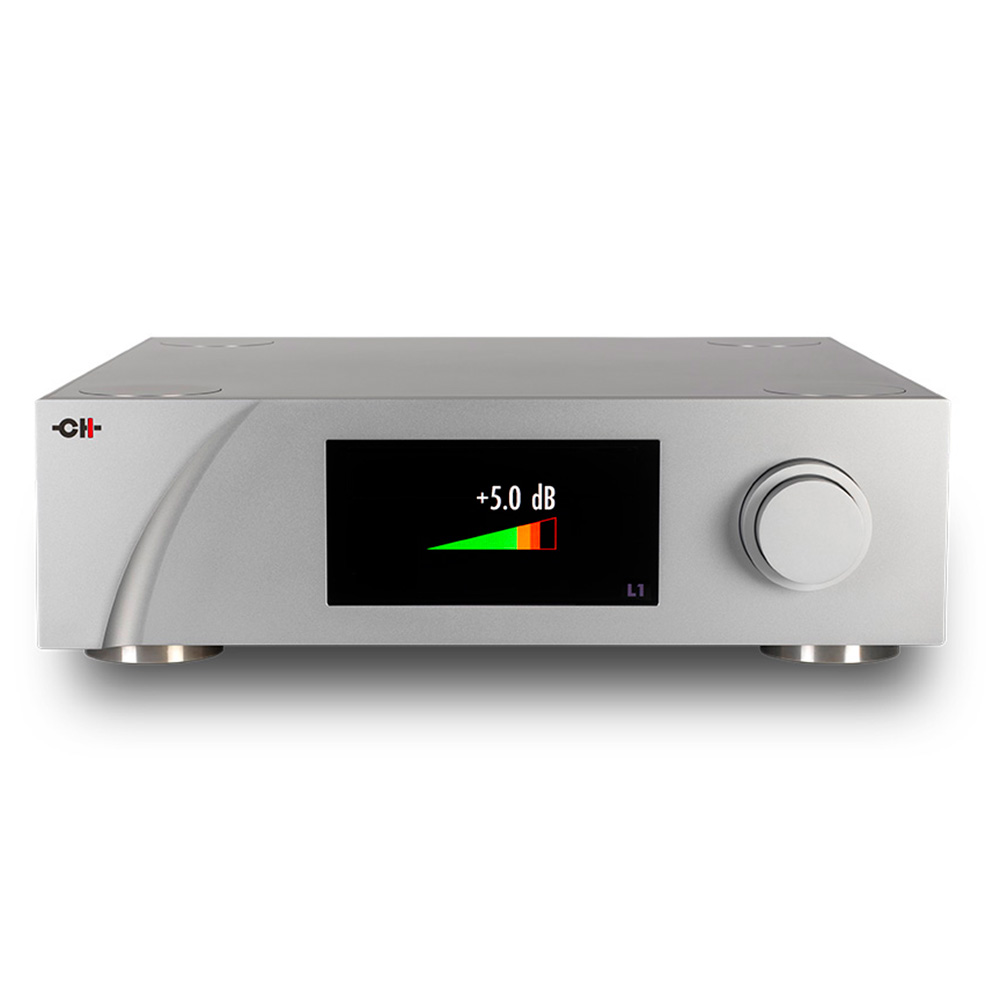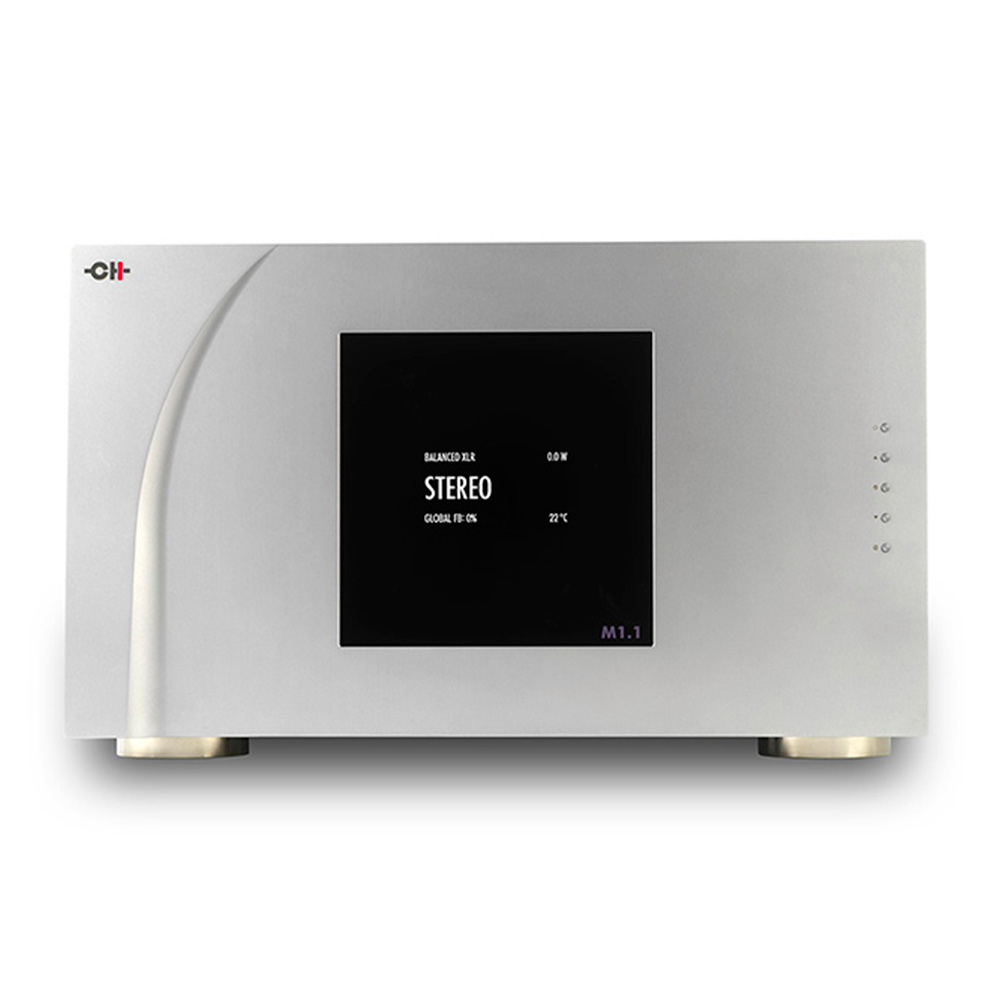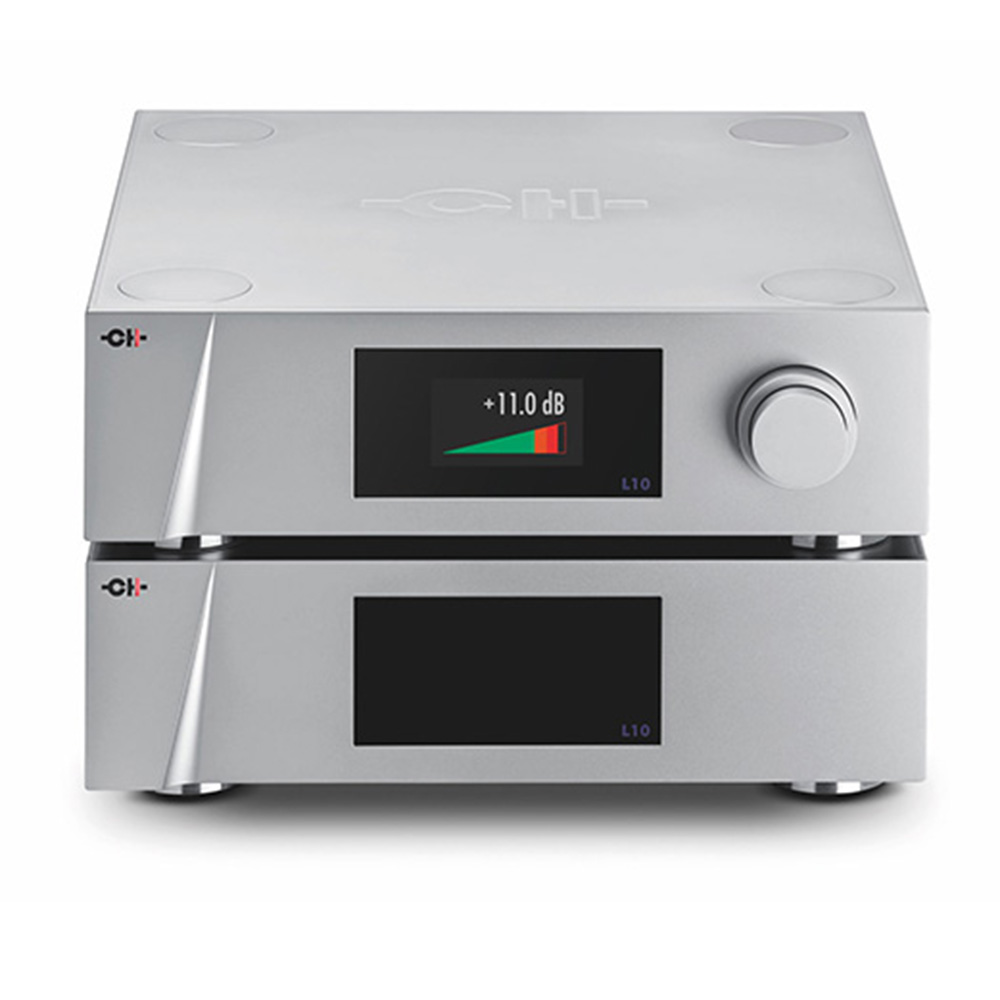Every CH Precision product starts life as a blank sheet of paper, its task analysed, the performance parameters defined and the optimum engineering solution selected. There are no preconceptions. In each case, the chosen solution might be found in the digital domain or the analog, selected for its ability to deliver the best possible results in each given situation. The result is that no CH Precision product is either wholly digital or absolutely analog.
Every CH Precision product starts life as a blank sheet of paper, its task analysed, the performance parameters defined and the optimum engineering solution selected. There are no preconceptions. In each case, the chosen solution might be found in the digital domain or the analog, selected for its ability to deliver the best possible results in each given situation.
The result is that no CH Precision product is either wholly digital or absolutely analog.

Thirty years ago few people predicted that, not only would we still be listening to records in the 21st Century, we would still be pressing them too. For many listeners, the vinyl record is more than just a viable source – it’s the pre-eminent source of recorded music that reflects both the inherent qualities and character of analog sound, but also the fact that record replay has significantly upped its game in the face of ever-increasing competition from high-res digital sources. These days, serious record collectors and listeners wanting the best possible sound will seek out rare original pressings, appreciate the virtues of mono (as opposed to many stereo) releases and purchase their discs, new and used, from all over the world.
Likewise, the once simple process of playing those discs can achieve levels of sophistication and record-by-record optimization we never dreamed of, back when the vinyl LP was the only high-quality format.


Thirty years ago few people predicted that, not only would we still be listening to records in the 21st Century, we would still be pressing them too. For many listeners, the vinyl record is more than just a viable source – it’s the pre-eminent source of recorded music that reflects both the inherent qualities and character of analog sound, but also the fact that record replay has significantly upped its game in the face of ever-increasing competition from high-res digital sources. These days, serious record collectors and listeners wanting the best possible sound will seek out rare original pressings, appreciate the virtues of mono (as opposed to many stereo) releases and purchase their discs, new and used, from all over the world.
Likewise, the once simple process of playing those discs can achieve levels of sophistication and record-by-record optimization we never dreamed of, back when the vinyl LP was the only high-quality format.
https://audiobymarkjones.ca/wp-content/uploads/2024/10/p1.jpg
We describe the C1 as a Controller because it is more, much more than just a digital to analog converter. While creating a world-class DAC could be considered a sufficient challenge on its own, the use of modular component architecture and the power of sophisticated software control opens up opportunities as well as offering solutions: opportunities that transform the role, capabilities and versatility of the C1.
Of course, it is digital conversion that lies at the heart of the C1. The perfect preservation of time and amplitude information is critical to reproducing musical signals stored in digital format. Noise and jitter performance is central to the design of any high-performance DAC, but at CH Precision we believe that the solutions we have adopted for the C1 take digital performance to a whole new level.
https://audiobymarkjones.ca/wp-content/uploads/2024/10/c1.jpg
Despite advances in high-resolution file-replay, the optical disc remains the reference standard for digital music replay. Those who have predicted the imminent demise of CD and who already danced on the grave of SACD, might want to take a look at the rude health of the vinyl LP, a format long ago consigned by many to the dustbin of audio history. In fact, there have never been so many CD and SACD titles available – and they have never been so affordable, making them the most consistent and stable digital source currently available. They are a source that’s going to be with us for years to come, making a high-performance optical disc player central to any high-end audio system.
https://audiobymarkjones.ca/wp-content/uploads/2024/10/d15.jpg
On the face of it, all a line-stage has to do is allow you to select between sources and set the system level. Sounds simple? Yet, not only is the quality and performance of the line-stage an absolutely key factor in determining overall system performance, there are fewer contenders for stateof-the-art line-stage honors than in any other product category. Maybe designing the best possible line-stage isn’t quite so simple after all.
Any great line-stage must possess transparency, ultra-low noise performance and absolute stability. It must anchor the incoming signals and deliver them onwards, propelled from a firm footing that ensures dynamic and musical authority. It must pass the source signals in your system, without limitation or disturbance, leaving no trace of itself on their passage. Any great line-stage needs to be the next best thing to sonically and musically invisible, the hi-fi equivalent of effortlessly enacting its own audio super power.
https://audiobymarkjones.ca/wp-content/uploads/2024/10/l1.jpg
When you listen to your audio system, you are quite literally listening to your AC supply. Just as the performance of a car depends on the type and quality of fuel you run it on, so your audio system’s performance can be undermined by a poor quality electrical supply and, within your system, no components are more vulnerable to compromise than the digital and low-level units.

Like its bigger brother, the M1.1 Reference power amplifier, there’s a lot more to the A1.5 than meets the eye – just in a more compact and more affordable form.
Faced with exactly the same challenges as the M1.1, the A1.5 embodies the same sophisticated, modular and scalable approach. It might be (slightly) smaller than the M1.1 and around two-thirds of its weight, but it’s still four amplifiers in one. It still offers the same adaptable, software controlled topology, adjustable input configuration and gain, user selectable global feedback ratio and cost-effective upgrade path. It offers exactly the same, incredibly short signal path, fully discrete, fully balanced and fully complementary circuit, built with the same carefully selected components to the same exacting standards. Even the casework, although shorter, has the same footprint, uses the same construction and includes the same mechanical grounding/stacking system. In fact, in every important way, the A1.5 is, quite literally, an M1.1 writ small – or, in Hollywood terms, “Honey, I shrank the amp…”.
https://audiobymarkjones.ca/wp-content/uploads/2024/10/a1.jpg
Traditionally, power amps have always been the simplest of audio components, at least on the outside: little more than a set of inputs, a set of outputs and a power switch. Until now.
The problem is that although power amps themselves might appear simple, their job is anything but straightforward. Caught in a sandwich between the output of a line-stage or DAC and the load requirements and sensitivity of any number of different loudspeakers, they must be able to accommodate the widest range of partnering equipment and interface parameters presented to any unit in the audio system. Achieving optimum results under such varied conditions demands a capable and versatile performer – yet as we’ve already established, most power amps offer a single, brute force solution to the problems they face, instead of adopting a more sophisticated response. It’s time for a change – it’s time to meet the CH Precision M1.1, a new-paradigm in power amplification.
https://audiobymarkjones.ca/wp-content/uploads/2024/10/m1.1.jpg
When it comes to musical integrity, nothing says “walk silently – but carry a big stick!” quite like the new L10.
By keeping the recipe and refining the ingredients – something that’s easily said but which has taken all of our accumulated knowledge and experience to achieve. But achieve it we did. The L1 set a new benchmark. The L10 sets an entirely new standard for musical performance.
The L10 retains the fully discrete, balanced and complementary design, ultra-short signal paths and heavily regulated and filtered, multi-stage power supplies, wide-bandwidth, high slew-rate and DC coupled topology of the L1. It incorporates the same sophisticated R-2R ladder volume control, sophisticated DC detection and cancellation circuitry and software control. But while the overall topology might seem familiar, the execution takes performance to a completely new level.
Being a CH Precision component, versatility, upgradability (to full four-chassis, true monaural topology) user configurable operation and a full-function control interface come as standard. Exceptional audio and musical performance comes as standard too – except that in this case, that performance is truly extraordinary.

Rewriting the record books is never easy – especially when it comes to audio and musical performance.
Sometimes that challenge is more than just sonic. In the case of the M10 we had to answer practical and physical demands as well.
In a few short years, our M1.1 has become a classic, setting the standard in terms of both performance and versatility. So superseding it, establishing a completely new level of musical capability was always going to demand a major effort and a complete re-think, re-examining every part down to component level. The result was a unique new input stage that significantly outperforms existing circuits, all new circuit boards, re-laid to minimise induced noise and distortion and upgraded components throughout the signal path – all contributing to a dramatic increase in low-level resolution, transparency, natural tonality and musical flow. But at the other end of the scale, headroom is a major limitation on amplifier performance. Dynamic swings can test even the M1.1’s generous 200 W/Ch rated output, so for the M10 we didn’t just increase that by 50%, we doubled the power supply capacity too, creating an output stage with massive musical potential. That reservoir of power doesn’t just come into play on musical climaxes. It gives the quietest passages and instruments the same stable clarity and presence you hear in real life, it precisely traces changes in level and musical density, it holds instruments separate but places them precisely within a single space. It recreates the energy and chemistry of the original performance – and when that performance reaches its climax, the M10 reproduces that too. Effortlessly!
